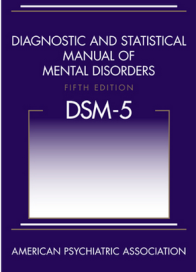What is the DSM-5?
The Di agnostic and Statistical Manual of Mental Disorders (DSM) is a book developed by the American Psychiatric Association that classifies and establishes criteria for mental health disorders and conditions.
agnostic and Statistical Manual of Mental Disorders (DSM) is a book developed by the American Psychiatric Association that classifies and establishes criteria for mental health disorders and conditions.
The American Psychiatric Association published the fifth addition of the manual (DSM-5) in May 2013. Over the course of many months, mental health professionals weighed in on changes to the diagnostic criteria for mental health disorders previously covered in the fourth edition of the manual (DSM-IV).
DSM-IV versus DSM-5
In DSM-IV, autism diagnosis was based on a triad of symptoms, including language delays, social communication deficits, and repetitive or restrictive behaviors. According to the new DSM-5 criteria, autism diagnosis guidelines include two criteria domains:
- Social interaction domain (including language and social communication deficits)
- Repetitive or restrictive behaviors
Most children previously diagnosed with autistic disorder, Apserger’s disorder, pervasive developmental disorder-not otherwise specified (PDD-NOS), or childhood disintegrative disorder are now diagnosed under the single title of Autism Spectrum Disorder (ASD).
To receive an ASD diagnosis, a child must also present with these symptoms during early childhood, and the symptoms must impair everyday function.
The DMS-5 guidelines have sparked concern that the new ASD diagnosis will exclude many individuals with Asperger’s disorder and PDD-NOS. A recent study reported that the DSM-5 diagnostic criteria can correctly diagnose most ASD cases, including those previously diagnosed with Asperger’s disorder or PDD-NOS, as well as exclude individuals with closely related disorders that do not fall on the autism spectrum. [1]
References:
1. Huerta et al. (2012) Application of DSM-5 Criteria for Autism Spectrum Disorder to Three Samples of Children With DSM-IV Diagnosis of Pervasive Developmental Disorders. Am J Psychiatry 169(10): 1056-64. PMID: 23032385

